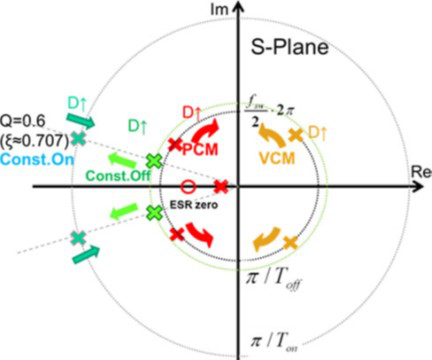LIBRARY
Comparison of Small-Signal Characteristics in Current-Mode Control Schemes for Point-of-Load Buck Converter Applications

Four kinds of commonly used current-mode control schemes (peak-current control, valley-current control, constant on-time control, and constant off-time control) are compared for suitability for use in point-of-load buck converters. Selection guidelines have been created according to the small-signal characteristics of different implementations.
- Compared with constant frequency control, constant on time/ off-time control can achieve wider T2 bandwidth in D<0.5 and D>0.5 applications. In constant frequency cur-rent-mode controls, PCM control does not need external ramp compensation for small duty cycles (e.g., D <0.3), so it is preferable to use PCM control for small-duty-cycle applications. Similarly, VCM control is preferable for large-duty-cycle applications.
- Variable frequency control is preferable for the converter that must accept a wide input voltage range, because the high-frequency double poles are always on the left half-plane. No ramp compensation is needed, so the current control effect is never weakened by an external ramp. In contrast, PCM control and VCM control need an external ramp to keep the double poles on the left half-plane. Designing the external ramp based on the worst case (maximum duty cycle for PCM control and minimum dutycycle for VCM control) means overcompensation for other operating points.
- To achieve AVP, constant on-time control simplifies the voltage loop finite-gain compensator.
- Constant off-time control inherently has zero audio susceptibility at any operating point. It is suitable for applications requiring perfect line-transient performance. PCM control can also achieve zero audio susceptibility and proper double pole damping at around 0.2 < D < 0.4.VCM control, and constant on-time control cannot have this property. For VCM control and constant on-time control, the gain of audio susceptibility increases with duty cycle D.






















































































